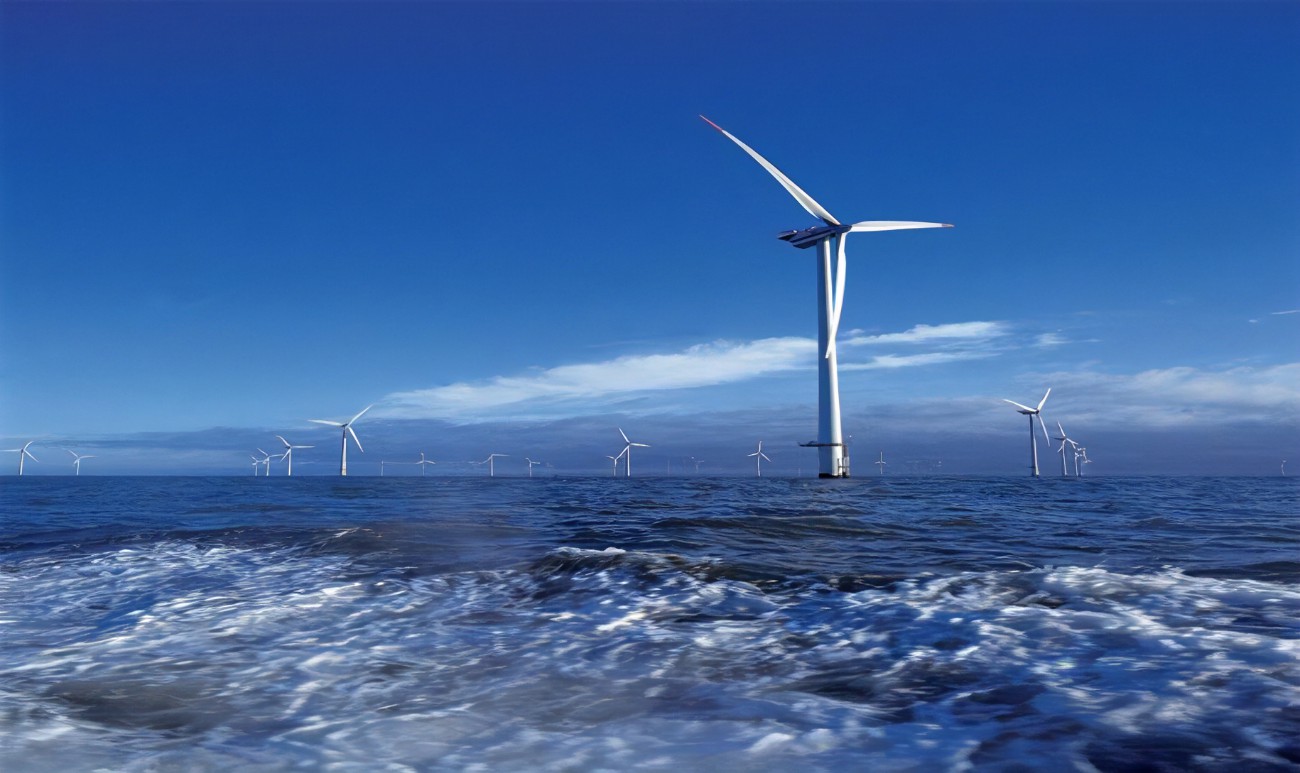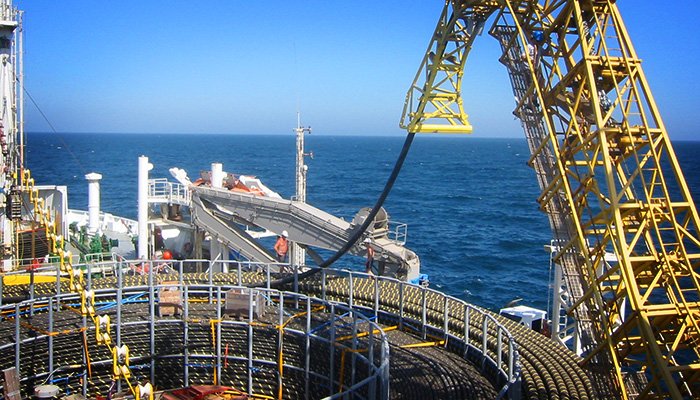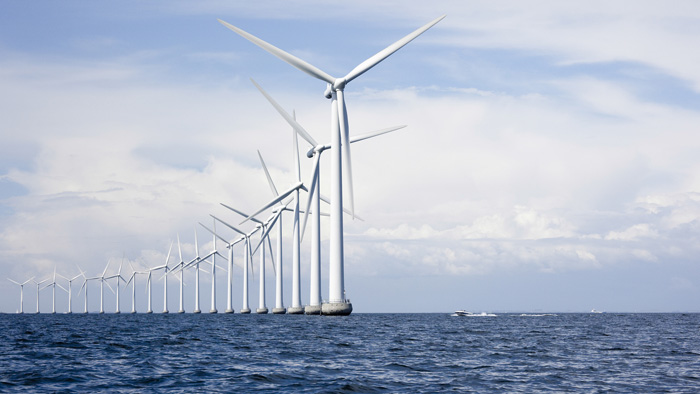
Transmission system operator TenneT has commissioned cable production companies NKT and Nexans as well as a consortium of Jan De Nul, LS Cable and Denys to produce and lay ten 525 kV DC cable systems for corresponding grid expansion projects, orders totaling approximately €5.5 billion.
With this second framework agreement, TenneT completed the main tender for the grid connection systems that began last year. This includes 14 offshore connections, five of which have already been commissioned by the Dutch in early 2023, and one land-based DC project.
NKT will realize connections at Geertruidenberg or Moerdijk for Nederwiek 3 and at Eemshaven for Doordewind 1 and Doordewind 2.
Nexans received orders for cable connections for the offshore projects BalWin 3 and LanWin 4, which will be connected in Wilhelmshaven, and LanWin 2 to the Heide area in Schleswig-Holstein.
A consortium of Jan De Nul, LS Cable, and Denys will implement additional cable systems for the Lower Saxony project.
These include BalWin4 and LanWin1, which will be connected in the Unterweser region.
The portfolio also includes LanWin5, with its onshore network connection in the Rastede region.
The consortium was also awarded the contract for the TenneT side part of the NordOstLink, a 525 kV onshore DC project in Schleswig-Holstein.
NordOstLink is a joint project between TenneT and transmission system operator 50Hertz.
The scope of the contract includes cable design and engineering, production, delivery, project management, and subsequent onshore and offshore laying of the 525 kV DC cable.
The contractor plans to commence work in 2023. Onshore cable laying is expected to begin after 2025. At sea, cable laying is expected to begin in 2026.
Each offshore project has a transmission capacity of 2 gigawatts and is expected to be commissioned in 2031, with NordOstLink commissioned in 2032.

Tim Meyerjürgens, COO of TenneT, said: "We are very proud to be named today as a partner for the manufacture and installation of these important and innovative cable systems for grid-connected systems. These are important steps in the success of the energy transition. With this award alone, we will implement approximately 7,000 kilometers of DC cables for onshore and offshore grid connection systems in Germany and the Netherlands by 2032."
Alexander Kara, President and CEO of NKT, said: "We are very pleased to have been selected again as a key partner for the ambitious 2GW project, which confirms our strong position in the UHV cable market. We recently announced TenneT's IJmuiden Ver and Nederwiek 2 contracts. These two projects are also part of the 2GW program and are among the first offshore wind farms in the world to use offshore power cables with 525 kV high-voltage direct current (HVDC) transmission technology. With this framework agreement, we will continue to work closely with TenneT and apply this innovative cable technology to other projects in the North Sea".
Vincent Dessale, COO and Senior Executive Vice President of Nexans said: "Only a strong and long-term partnership between suppliers and transmission system operators - based on trust, transparency and joint technology development - can meet the need for significant investment in the offshore grid in Europe. the framework agreement developed by TenneT is the perfect answer to these challenges and Nexans is proud to be part of these groundbreaking developments. We are delighted with the trust TenneT has placed in us. Our partnership can only strengthen our respective ongoing commitment to the global offshore wind energy transition".
Philippe Hutse, Director of Jan De Nul Group Offshore: "From the outset, we have welcomed TenneT's new approach to tendering, which emphasizes collaboration and transparency, and the outcome of a potential multi-year framework agreement gives us the long-awaited planning guarantees that we and the offshore energy industry have urgently needed for some time. Together with our consortium partners LS Cable & System and Denys, we are therefore delighted to sign this contract with TenneT and to contribute to the European vision of energy security and decarbonization. This award is a recognition of our expertise in realizing complex cable laying projects and building energy transitions."
Marco Kuijpers, TenneT's Director of Offshore Large Projects, said: "We are delighted to have been able to award these framework agreements in such a short period. The new tender process has accelerated the process so that agreements can be reached with all suppliers within six months. Such a process usually takes up to 18 months. These contracts involve significant investments and give our suppliers the planning security they need to invest in additional resources in the form of production facilities, cable-laying vessels, and excavation tools".
Each 2GW cable system will consist of four cables: a positive and negative conductor, a metal return conductor, and a fiber optic cable.
With the firm belief that the energy transition can only succeed in a spirit of cooperation, TenneT, together with the market players, has started to develop a research and development (R&D) program for a 525 kV HVDC grid connection system with a transmission capacity of 2GW.
The certification of cable suppliers in the past 2022 was the result of a constructive and intensive dialogue between TenneT and the relevant market players.

Through the Esbjerg Declaration, Belgium, Denmark, Germany, and the Netherlands agreed at the North Sea Energy Summit in May 2022 to jointly install at least 65 gigawatts (GW) of offshore wind energy by 2030.
TenneT, Europe's leading offshore transmission system operator, will provide about two-thirds of this amount through a 40 GW grid connection.
To this end, TenneT is building offshore grid connection systems in Germany and the Netherlands with a total capacity of 20 GW.
As part of its 2GW program, TenneT has developed a new global standard for offshore grid connection systems - together with the world's leading suppliers to the industry.
This new standard combines TenneT's extensive expertise in offshore grid expansion with a multinational approach.
With a focus on harmonization and standardization of offshore grid connection systems, it provides the necessary blueprint for the future and the necessary acceleration of the energy transition.
With an additional two gigawatts of transmission capacity per system, the number of new systems can be significantly reduced compared to previous offshore grid connections.
The 2GW program is therefore setting a new standard for the energy transition in Europe.
It will bring more green energy to Europe and its citizens safely and cost-effectively, with the least possible environmental impact.
Zms cable manufacturers offer qualified and high-quality cable products, and if you have any questions about your cable purchase, we have professional cable sales representatives available to address your concerns.